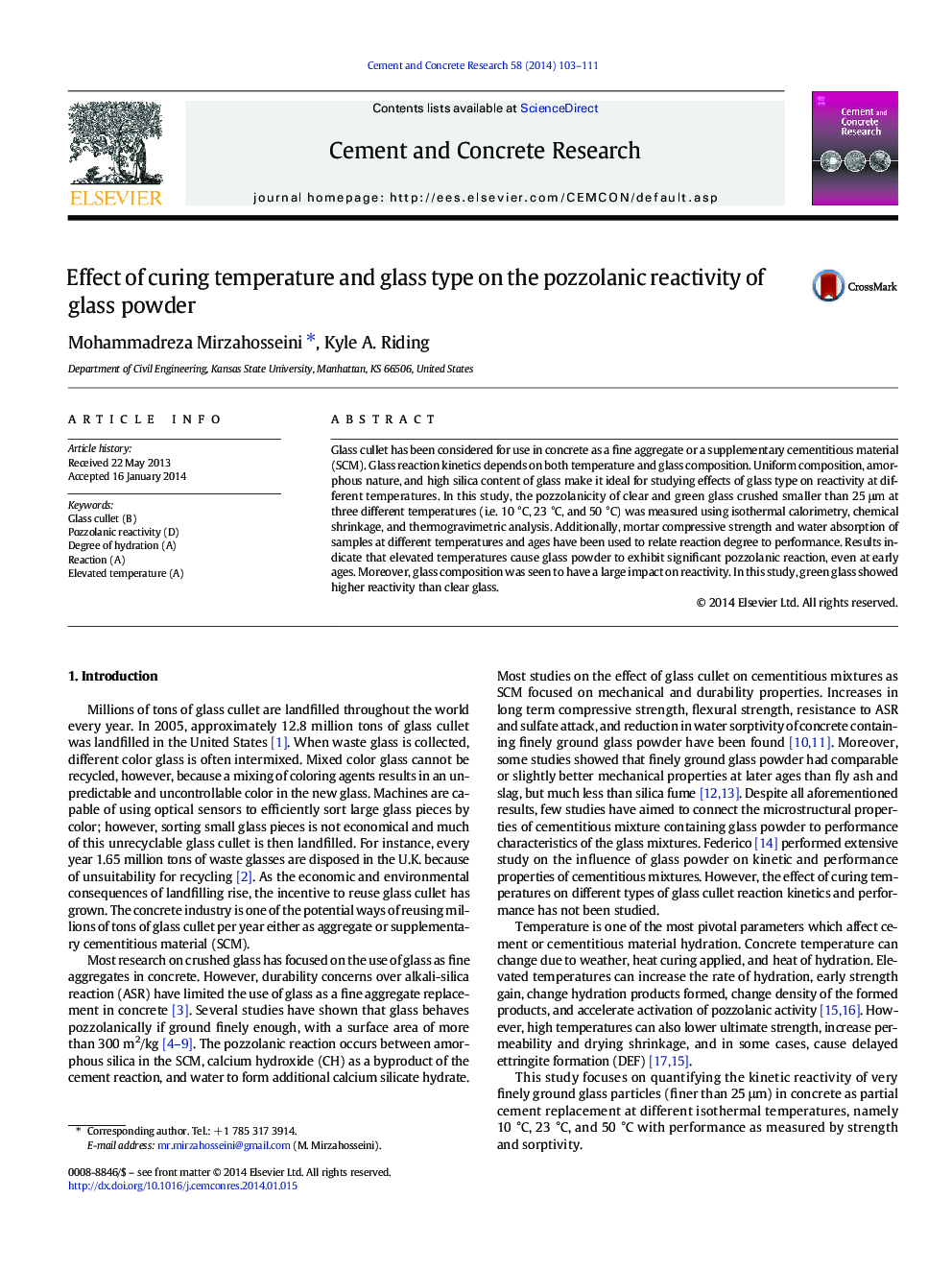| Article ID | Journal | Published Year | Pages | File Type |
|---|---|---|---|---|
| 7885585 | Cement and Concrete Research | 2014 | 9 Pages |
Abstract
Glass cullet has been considered for use in concrete as a fine aggregate or a supplementary cementitious material (SCM). Glass reaction kinetics depends on both temperature and glass composition. Uniform composition, amorphous nature, and high silica content of glass make it ideal for studying effects of glass type on reactivity at different temperatures. In this study, the pozzolanicity of clear and green glass crushed smaller than 25 μm at three different temperatures (i.e. 10 °C, 23 °C, and 50 °C) was measured using isothermal calorimetry, chemical shrinkage, and thermogravimetric analysis. Additionally, mortar compressive strength and water absorption of samples at different temperatures and ages have been used to relate reaction degree to performance. Results indicate that elevated temperatures cause glass powder to exhibit significant pozzolanic reaction, even at early ages. Moreover, glass composition was seen to have a large impact on reactivity. In this study, green glass showed higher reactivity than clear glass.
Keywords
Related Topics
Physical Sciences and Engineering
Engineering
Industrial and Manufacturing Engineering
Authors
Mohammadreza Mirzahosseini, Kyle A. Riding,
